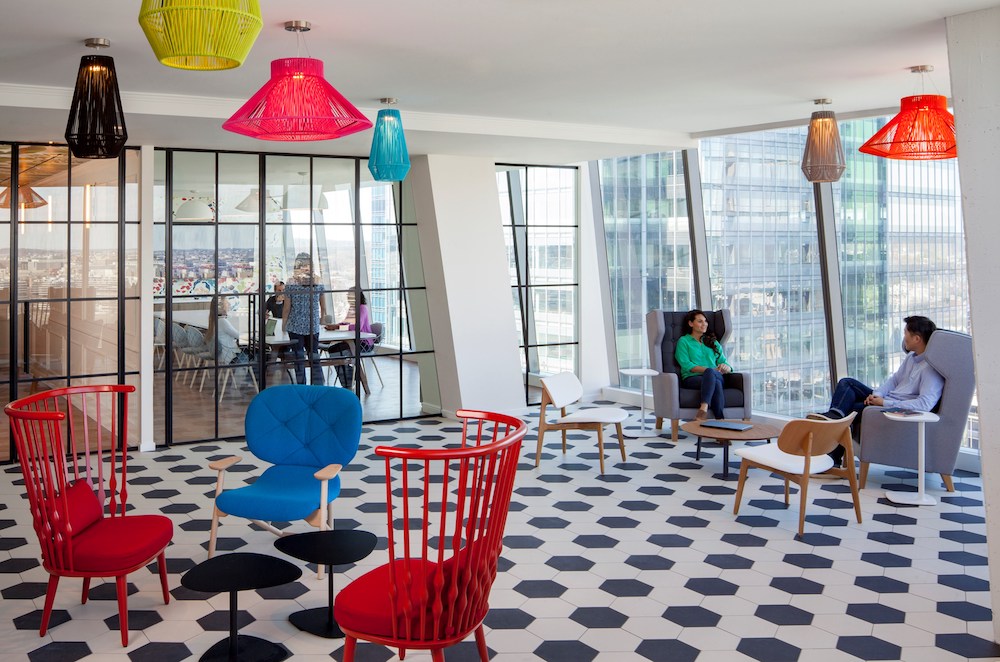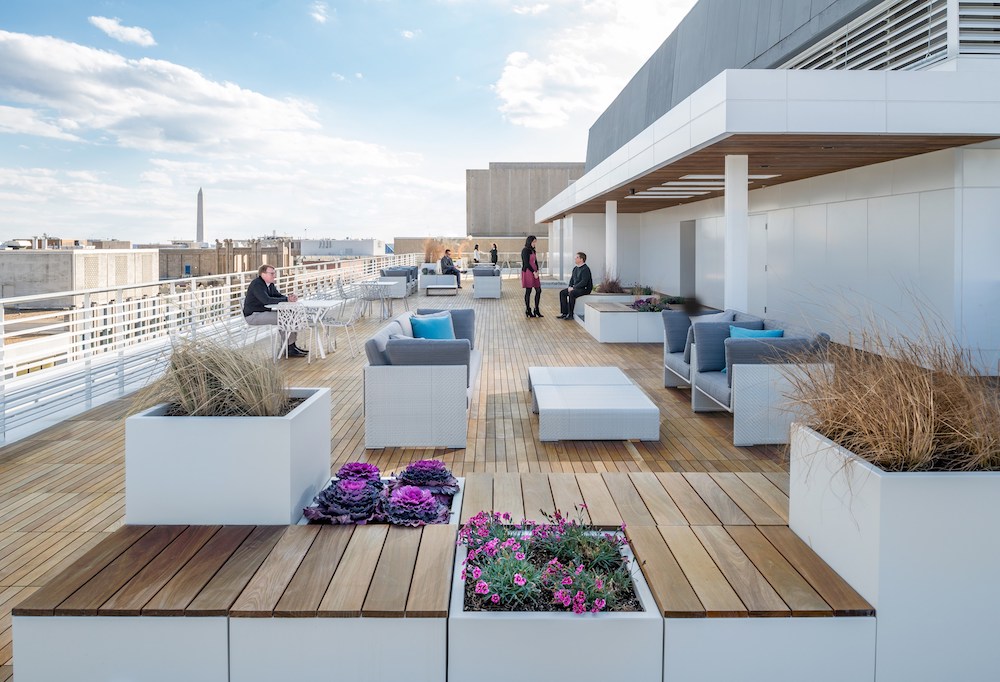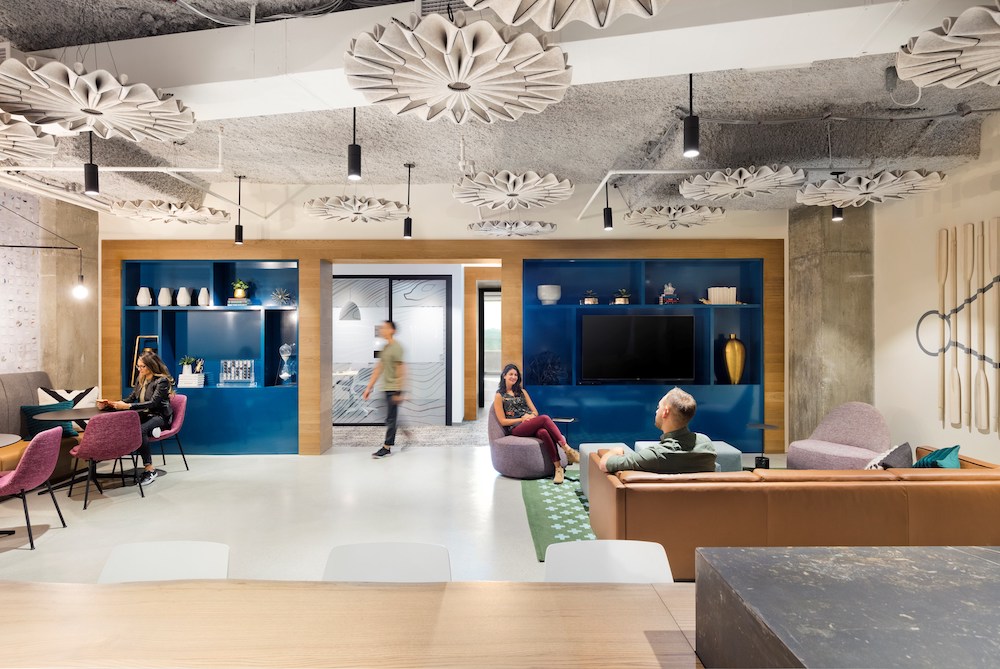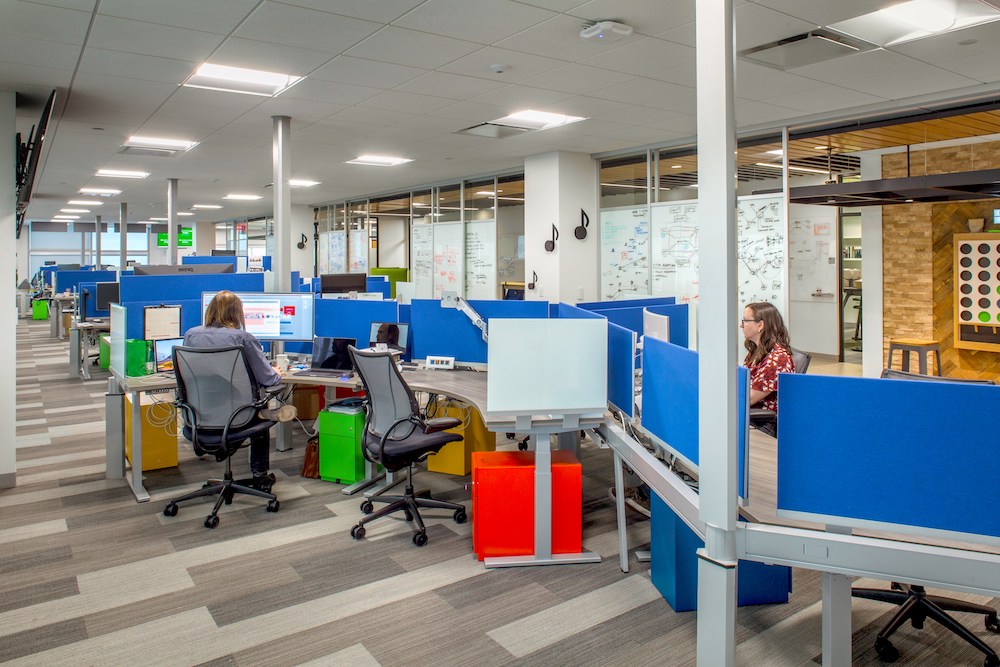As we prepare to return to the office, this is our opportunity to create places of work that truly enhance our well-being and invigorate our connections.

In this unprecedented time, we have the collective and global opportunity to engage in a profound social experiment that challenges our notions of how and where we conduct business, family life, school, and parental care. We are witness to the simple shift of staying home which has altered our sense of safety, personal connections, and our feeling of purpose. The well-being of those around us has been challenged in both good and bad ways, but one thing feels certain: when this pandemic ends, we will not go back to the way things were.
One of the most profound changes has been our idea of work — how, where, and when we conduct business. We have discovered we actually can work successfully in a remote, virtual world. And it appears that people are enjoying it. Stantec’s Workplace Team recently conducted a survey of 100 clients. Responses showed that people felt much more productive and far less stressed by not having to negotiate that morning rush to get out the door and the mind-numbing commute to work. As one respondent said, gone are the days of always being 10 minutes late for meetings — and negotiating the stress that accompanies that feeling.
Other positive, yet more subtle benefits have been an uptick in people seeking nature for restoration, as well as engaging in hobbies that nurture a creative bent. So many of us found new ways to connect with family and friends during the early days of our forced enclosure. We also turned to our kitchens rather than rushing through fast-food outlets to feed our families.

It would appear then that working from home is the ideal workplace for achieving positive health and well-being. According to The Centers for Disease Control and Prevention, well-being is described as an ongoing process of engaging in behaviors that benefit ourselves and others. This includes building and working on meaningful relationships; eating in a manner that supports our bodies and mind; moving our bodies in ways that keeps them strong and flexible; regulating our moods to soften stress, anger and frustration; balancing productivity with rest and play; and engaging in activities that give a sense of purpose. This ongoing process ultimately leads to an upward trend in vitality, happiness, and fulfillment.
So fundamentally, why would we ever return to the workplace?
For one very critical reason: To alleviate the crushing feeling of social isolation. Many studies show that loneliness and isolation is the single largest indicator of life span. It is the number one cause of chronic disease. We all know by now Zoom does not nurture meaningful relationships long-term. There is nothing like physical proximity to others to enrich our sense of connection and alleviate loneliness.
Charles Montgomery, author of Happy City, would agree. He states that physical proximity is key for elevating the collective spirit. We need to be close to people to feel we are part of a tribe. And that tribe is essential for building common purpose and a sense of belonging. We need to ‘see and be seen’ to know we actually exist.

Yes, we can get business done working remotely, but what about getting business? Stephen Johnson, in his book Where Good Ideas Come From, makes a profound case that ‘dense settlements in liquid networks,’ is essential for innovation. He demonstrates that when civilizations settled into cities, the number of innovations sky-rocketed in a very short time. It takes a diverse population in close proximity to make creative connections between disparate ideas. This is critical not only within a corporation, but between businesses as well.
Think of the spontaneous conversations you have had that have led to greater insight and better ideas. Or those over-heard discussions that were key for turning strategy around or helping a junior colleague in a tough situation. Essentially, this means the closer the proximity of people, the better the outcomes in job performance, decision-making, and quality results.
Sure, we are working remotely successfully—for now. Those companies that are thriving virtually are doing so because of a strong work culture. But how did they get that culture in the first place? By building trust and rapport in a physical workplace.
As we move to re-enter offices, we know the workplace will not be the same. People have experienced working in an entirely new way unencumbered by going to a specific place at a specific time and are enjoying the flexibility, increased productivity, and reduced stressed. We know that a Zoom meeting is simple to pop in and out of and information is easily shared electronically.

We do not want to go back to rows of desks tethered to technology and a strict in-office schedule. We want to do focused work where we do it best, which may be in the basement bedroom. However, we also need an environment that enriches our ability to communicate spontaneously, build rapport, discuss ideas, and derive creative solutions and strategies. We want to work in a setting that brings us to a higher plane — where we find our purpose, where we feel connected to others – including other businesses.
Will we need this setting all day, and for every employee? Not likely. But it will need to be the kind of place that draws people away from their home havens because of the amenities it affords, the degree of comfort and safety it provides, and the community it inspires. It will also need to accommodate flexible schedules and be easily re-configured to accommodate a variety of working styles.
We need a safe place to conduct business — sanitation, hygiene, and thoughtful means of human movement are paramount considerations. But this is our opportunity to create places of work that truly enhance our well-being, invigorate our connections, and inspire us to put our feet on the floor each morning, and get out that door.

